Xuan Zhou
WideSearch: Benchmarking Agentic Broad Info-Seeking
Aug 11, 2025Abstract:From professional research to everyday planning, many tasks are bottlenecked by wide-scale information seeking, which is more repetitive than cognitively complex. With the rapid development of Large Language Models (LLMs), automated search agents powered by LLMs offer a promising solution to liberate humans from this tedious work. However, the capability of these agents to perform such "wide-context" collection reliably and completely remains largely unevaluated due to a lack of suitable benchmarks. To bridge this gap, we introduce WideSearch, a new benchmark engineered to evaluate agent reliability on these large-scale collection tasks. The benchmark features 200 manually curated questions (100 in English, 100 in Chinese) from over 15 diverse domains, grounded in real user queries. Each task requires agents to collect large-scale atomic information, which could be verified one by one objectively, and arrange it into a well-organized output. A rigorous five-stage quality control pipeline ensures the difficulty, completeness, and verifiability of the dataset. We benchmark over 10 state-of-the-art agentic search systems, including single-agent, multi-agent frameworks, and end-to-end commercial systems. Most systems achieve overall success rates near 0\%, with the best performer reaching just 5\%. However, given sufficient time, cross-validation by multiple human testers can achieve a near 100\% success rate. These results demonstrate that present search agents have critical deficiencies in large-scale information seeking, underscoring urgent areas for future research and development in agentic search. Our dataset, evaluation pipeline, and benchmark results have been publicly released at https://widesearch-seed.github.io/
TCC-Bench: Benchmarking the Traditional Chinese Culture Understanding Capabilities of MLLMs
May 19, 2025Abstract:Recent progress in Multimodal Large Language Models (MLLMs) have significantly enhanced the ability of artificial intelligence systems to understand and generate multimodal content. However, these models often exhibit limited effectiveness when applied to non-Western cultural contexts, which raises concerns about their wider applicability. To address this limitation, we propose the Traditional Chinese Culture understanding Benchmark (TCC-Bench), a bilingual (i.e., Chinese and English) Visual Question Answering (VQA) benchmark specifically designed for assessing the understanding of traditional Chinese culture by MLLMs. TCC-Bench comprises culturally rich and visually diverse data, incorporating images from museum artifacts, everyday life scenes, comics, and other culturally significant contexts. We adopt a semi-automated pipeline that utilizes GPT-4o in text-only mode to generate candidate questions, followed by human curation to ensure data quality and avoid potential data leakage. The benchmark also avoids language bias by preventing direct disclosure of cultural concepts within question texts. Experimental evaluations across a wide range of MLLMs demonstrate that current models still face significant challenges when reasoning about culturally grounded visual content. The results highlight the need for further research in developing culturally inclusive and context-aware multimodal systems. The code and data can be found at: https://tcc-bench.github.io/.
Scalable Hierarchical Reinforcement Learning for Hyper Scale Multi-Robot Task Planning
Dec 27, 2024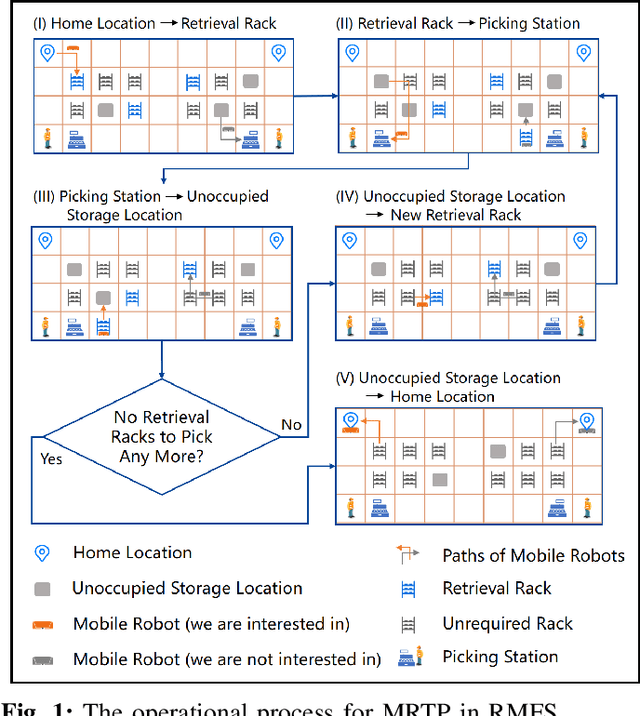
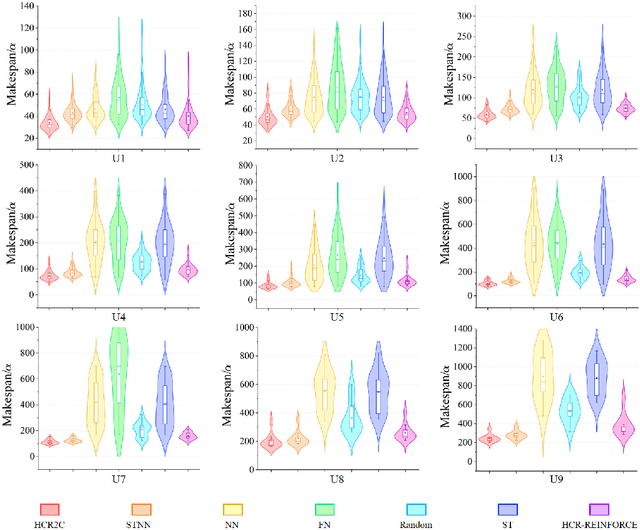
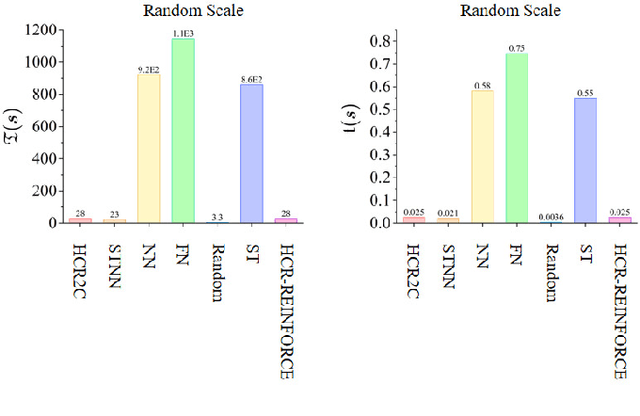
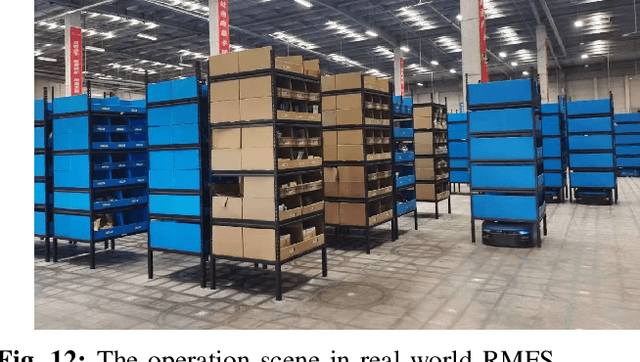
Abstract:To improve the efficiency of warehousing system and meet huge customer orders, we aim to solve the challenges of dimension disaster and dynamic properties in hyper scale multi-robot task planning (MRTP) for robotic mobile fulfillment system (RMFS). Existing research indicates that hierarchical reinforcement learning (HRL) is an effective method to reduce these challenges. Based on that, we construct an efficient multi-stage HRL-based multi-robot task planner for hyper scale MRTP in RMFS, and the planning process is represented with a special temporal graph topology. To ensure optimality, the planner is designed with a centralized architecture, but it also brings the challenges of scaling up and generalization that require policies to maintain performance for various unlearned scales and maps. To tackle these difficulties, we first construct a hierarchical temporal attention network (HTAN) to ensure basic ability of handling inputs with unfixed lengths, and then design multi-stage curricula for hierarchical policy learning to further improve the scaling up and generalization ability while avoiding catastrophic forgetting. Additionally, we notice that policies with hierarchical structure suffer from unfair credit assignment that is similar to that in multi-agent reinforcement learning, inspired of which, we propose a hierarchical reinforcement learning algorithm with counterfactual rollout baseline to improve learning performance. Experimental results demonstrate that our planner outperform other state-of-the-art methods on various MRTP instances in both simulated and real-world RMFS. Also, our planner can successfully scale up to hyper scale MRTP instances in RMFS with up to 200 robots and 1000 retrieval racks on unlearned maps while keeping superior performance over other methods.
Towards Automated Cross-domain Exploratory Data Analysis through Large Language Models
Dec 10, 2024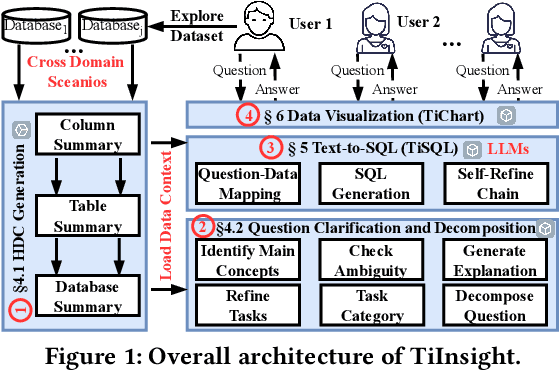
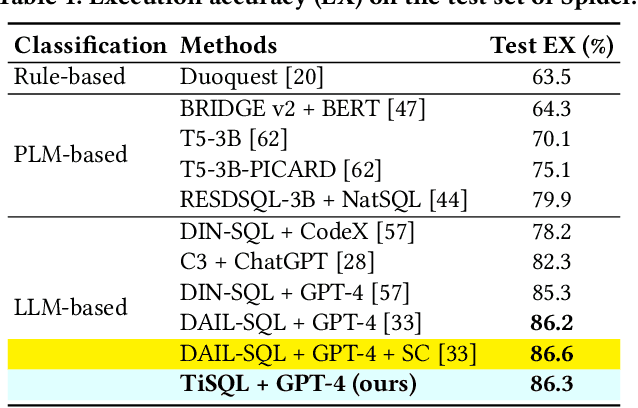
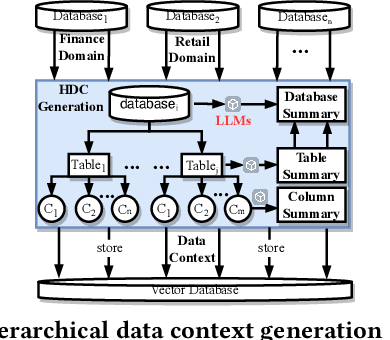
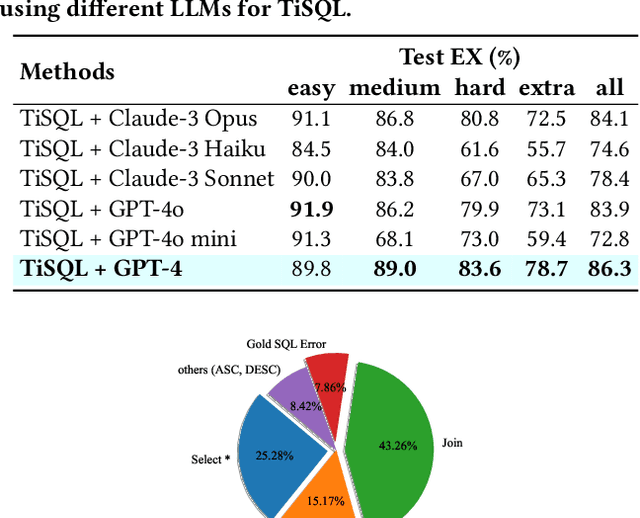
Abstract:Exploratory data analysis (EDA), coupled with SQL, is essential for data analysts involved in data exploration and analysis. However, data analysts often encounter two primary challenges: (1) the need to craft SQL queries skillfully, and (2) the requirement to generate suitable visualization types that enhance the interpretation of query results. Due to its significance, substantial research efforts have been made to explore different approaches to address these challenges, including leveraging large language models (LLMs). However, existing methods fail to meet real-world data exploration requirements primarily due to (1) complex database schema; (2) unclear user intent; (3) limited cross-domain generalization capability; and (4) insufficient end-to-end text-to-visualization capability. This paper presents TiInsight, an automated SQL-based cross-domain exploratory data analysis system. First, we propose hierarchical data context (i.e., HDC), which leverages LLMs to summarize the contexts related to the database schema, which is crucial for open-world EDA systems to generalize across data domains. Second, the EDA system is divided into four components (i.e., stages): HDC generation, question clarification and decomposition, text-to-SQL generation (i.e., TiSQL), and data visualization (i.e., TiChart). Finally, we implemented an end-to-end EDA system with a user-friendly GUI interface in the production environment at PingCAP. We have also open-sourced all APIs of TiInsight to facilitate research within the EDA community. Through extensive evaluations by a real-world user study, we demonstrate that TiInsight offers remarkable performance compared to human experts. Specifically, TiSQL achieves an execution accuracy of 86.3% on the Spider dataset using GPT-4. It also demonstrates state-of-the-art performance on the Bird dataset.
FLDNet: A Foreground-Aware Network for Polyp Segmentation Leveraging Long-Distance Dependencies
Sep 12, 2023



Abstract:Given the close association between colorectal cancer and polyps, the diagnosis and identification of colorectal polyps play a critical role in the detection and surgical intervention of colorectal cancer. In this context, the automatic detection and segmentation of polyps from various colonoscopy images has emerged as a significant problem that has attracted broad attention. Current polyp segmentation techniques face several challenges: firstly, polyps vary in size, texture, color, and pattern; secondly, the boundaries between polyps and mucosa are usually blurred, existing studies have focused on learning the local features of polyps while ignoring the long-range dependencies of the features, and also ignoring the local context and global contextual information of the combined features. To address these challenges, we propose FLDNet (Foreground-Long-Distance Network), a Transformer-based neural network that captures long-distance dependencies for accurate polyp segmentation. Specifically, the proposed model consists of three main modules: a pyramid-based Transformer encoder, a local context module, and a foreground-Aware module. Multilevel features with long-distance dependency information are first captured by the pyramid-based transformer encoder. On the high-level features, the local context module obtains the local characteristics related to the polyps by constructing different local context information. The coarse map obtained by decoding the reconstructed highest-level features guides the feature fusion process in the foreground-Aware module of the high-level features to achieve foreground enhancement of the polyps. Our proposed method, FLDNet, was evaluated using seven metrics on common datasets and demonstrated superiority over state-of-the-art methods on widely-used evaluation measures.
Feature Aggregation Network for Building Extraction from High-resolution Remote Sensing Images
Sep 12, 2023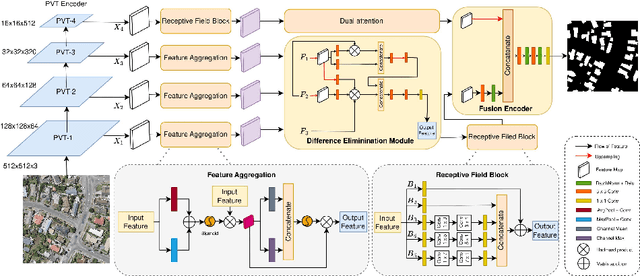
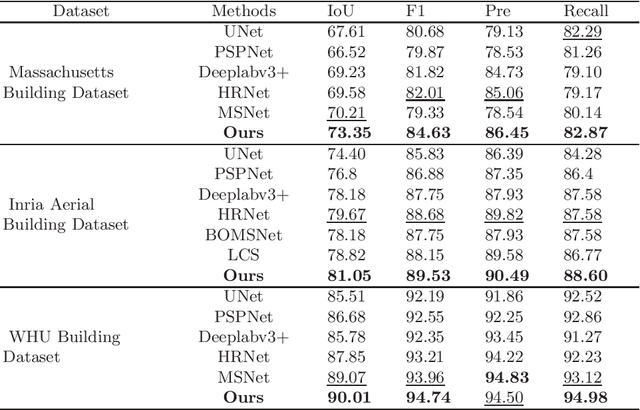
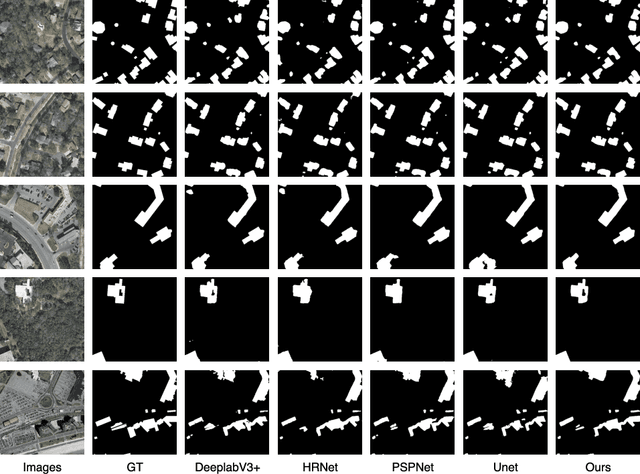
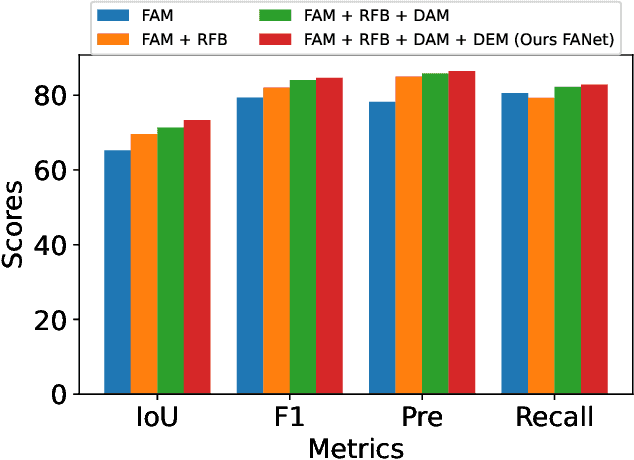
Abstract:The rapid advancement in high-resolution satellite remote sensing data acquisition, particularly those achieving submeter precision, has uncovered the potential for detailed extraction of surface architectural features. However, the diversity and complexity of surface distributions frequently lead to current methods focusing exclusively on localized information of surface features. This often results in significant intraclass variability in boundary recognition and between buildings. Therefore, the task of fine-grained extraction of surface features from high-resolution satellite imagery has emerged as a critical challenge in remote sensing image processing. In this work, we propose the Feature Aggregation Network (FANet), concentrating on extracting both global and local features, thereby enabling the refined extraction of landmark buildings from high-resolution satellite remote sensing imagery. The Pyramid Vision Transformer captures these global features, which are subsequently refined by the Feature Aggregation Module and merged into a cohesive representation by the Difference Elimination Module. In addition, to ensure a comprehensive feature map, we have incorporated the Receptive Field Block and Dual Attention Module, expanding the receptive field and intensifying attention across spatial and channel dimensions. Extensive experiments on multiple datasets have validated the outstanding capability of FANet in extracting features from high-resolution satellite images. This signifies a major breakthrough in the field of remote sensing image processing. We will release our code soon.
A Fuzzy-set-based Joint Distribution Adaptation Method for Regression and its Application to Online Damage Quantification for Structural Digital Twin
Nov 03, 2022



Abstract:Online damage quantification suffers from insufficient labeled data. In this context, adopting the domain adaptation on historical labeled data from similar structures/damages to assist the current diagnosis task would be beneficial. However, most domain adaptation methods are designed for classification and cannot efficiently address damage quantification, a regression problem with continuous real-valued labels. This study first proposes a novel domain adaptation method, the Online Fuzzy-set-based Joint Distribution Adaptation for Regression, to address this challenge. By converting the continuous real-valued labels to fuzzy class labels via fuzzy sets, the conditional distribution discrepancy is measured, and domain adaptation can simultaneously consider the marginal and conditional distribution for the regression task. Furthermore, a framework of online damage quantification integrated with the proposed domain adaptation method is presented. The method has been verified with an example of a damaged helicopter panel, in which domain adaptations are conducted across different damage locations and from simulation to experiment, proving the accuracy of damage quantification can be improved significantly even in a noisy environment. It is expected that the proposed approach to be applied to the fleet-level digital twin considering the individual differences.
Deep Reinforcement Learning in a Monetary Model
Apr 19, 2021
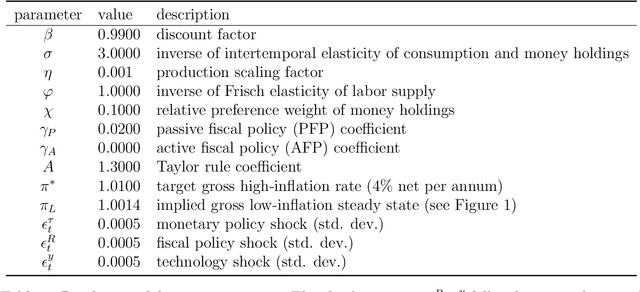


Abstract:We propose using deep reinforcement learning to solve dynamic stochastic general equilibrium models. Agents are represented by deep artificial neural networks and learn to solve their dynamic optimisation problem by interacting with the model environment, of which they have no a priori knowledge. Deep reinforcement learning offers a flexible yet principled way to model bounded rationality within this general class of models. We apply our proposed approach to a classical model from the adaptive learning literature in macroeconomics which looks at the interaction of monetary and fiscal policy. We find that, contrary to adaptive learning, the artificially intelligent household can solve the model in all policy regimes.
 Add to Chrome
Add to Chrome Add to Firefox
Add to Firefox Add to Edge
Add to Edge